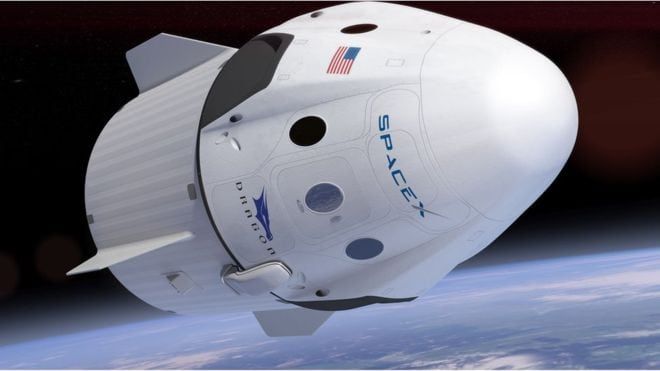Long distance space travel could be powered by – human waste, according to new research.
Waste products – such as urine and carbon dioxide – could also be used to make tools, suggests the study.
That’s one of the ultimate goals of scientists who are developing ways to make long space trips feasible.
Astronauts can’t take a lot of spare parts into space because every extra ounce adds to the cost of fuel needed to escape Earth’s gravity.
Doctor Mark Blenner, of Clemson University in the United States, said: “If astronauts are going to make journeys that span several years, we’ll need to find a way to reuse and recycle everything they bring with them.
“Atom economy will become really important.”
He said the solution lies in part with the astronauts themselves, who will constantly generate waste from breathing, eating and using materials.
Unlike their friends on Earth, Dr Blenner says, the spacefarers won’t want to throw any waste molecules away.
He and his team are studying how to repurpose those molecules and convert them into products the astronauts need, such as polyesters and nutrients.
Dr Blenner said some essential nutrients, such as omega-3 fatty acids, have a shelf life of just a couple of years.
They’ll need to be made en route, beginning a few years after launch, or at the destination.

Dr Blenner said: “Having a biological system that astronauts can awaken from a dormant state to start producing what they need, when they need it, is the motivation for our project.”
His biological system includes a variety of strains of the yeast Yarrowia lipolytica. The organisms require both nitrogen and carbon to grow.
The researchers found that the yeast can obtain their nitrogen from urea in untreated urine.
And the yeast obtain their carbon from CO2, which could come from astronauts’ exhaled breath, or from the Martian atmosphere.
But to use CO2, the yeast require a middleman to “fix” the carbon into a form they can ingest. For this purpose, the yeast rely on photosynthetic cyanobacteria or algae provided by the researchers.

Dr Blenner said one of the yeast strains produces omega-3 fatty acids, which contribute to heart, eye and brain health.
Another strain has been engineered to churn out monomers and link them to make polyester polymers.
The polymers could then be used in a 3-D printer to generate new plastic parts.
Dr Blenner’s team is continuing to engineer the yeast strain to produce a variety of monomers that can be polymerised into different types of polyesters with a range of properties.
For now, the engineered yeast strains can produce only small amounts of polyesters or nutrients, but the scientists are working on boosting output.
They’re also looking into applications here on Earth, in fish farming and human nutrition. For example, farmed fish need to be given omega-3 fatty acid supplements, which could be produced by Dr Blenner’s yeast strains.
He added: “We’re learning that Y. lipolytica is quite a bit different than other yeast in their genetics and biochemical nature.
“Every new organism has some amount of quirkiness that you have to focus on and understand better.”
The findings were presenting at the National Meeting of the American Chemical Society in Washington, DC.
RELATED
https://www.thelondoneconomic.com/news/earth-4-9c-warmer-2100-climate-change-continues/31/07/

